Take Me to The Beninese Food Recipes
Benin officially the Republic of Benin (French: République du Bénin), and formerly Dahomey, is a country in West Africa. It is a country steeped in history, diverse landscapes, and a vibrant culture. The cuisine of Beninese Food is very varied and exciting.
Discover the captivating world of Beninese food, where history, climate, and culture converge to create a culinary tapestry. From vibrant street markets to traditional family recipes, Benin’s gastronomy is a celebration of flavors and traditions.
With a population of over 12 million people, Benin is known for its warm climate, beautiful scenery, and a mix of agricultural and industrial activities. As we delve into the heart of Benin, one cannot help but be captivated by the nation’s culinary treasures. In this article, we explore the essence of Beninese food, its historical roots, the influence of climate and geography, traditional dishes, health implications, and the national dish that binds the people together.
Read on to uncover the secrets of Benin’s culinary landscape.
Beninese Food – Key Takeaways
- Culinary Fusion: Beninese food is a fusion of indigenous flavors, reflecting the country’s rich cultural diversity.
- Historical Roots: The cuisine is deeply rooted in the nation’s history, shaped by centuries of trade and cultural exchange.
- Climate’s Influence: Benin’s tropical climate influences the availability of ingredients and the cooking methods employed.
- Traditional Delicacies: Explore the array of traditional dishes that showcase Benin’s culinary heritage.
- Health Considerations: Beninese cuisine offers a balance of nutrition and indulgence, with health implications worth exploring.
- National Dish Bond: Discover how a singular national dish unites the people, transcending cultural and regional differences.
- Exploring Ingredients: Dive into the unique flavors of Beninese cuisine through its diverse and locally sourced ingredients.
Take Me to The Beninese Food Recipes
Where is Benin?

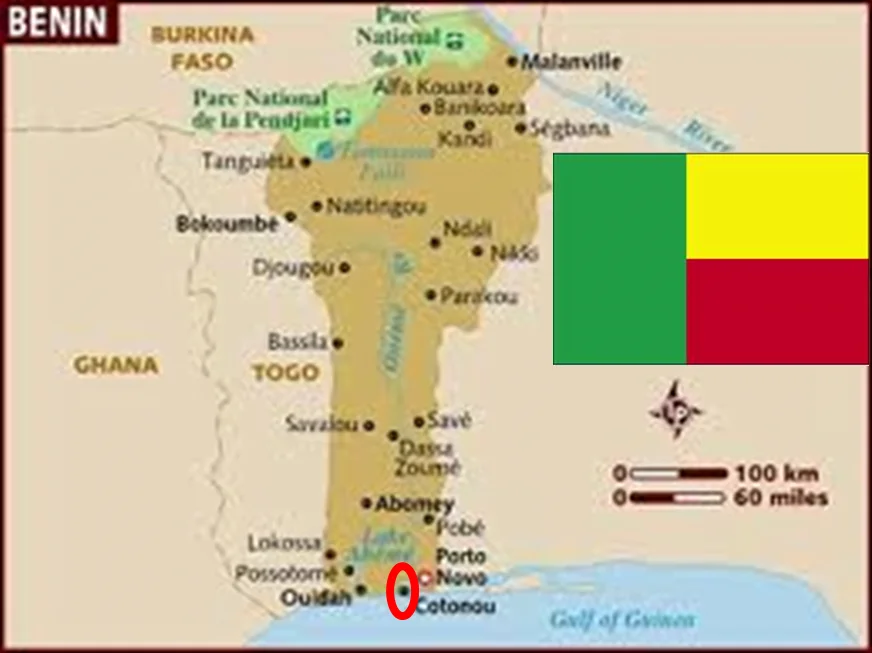
Index of Contents
- Take Me to The Recipes
- More Articles
- 10 Fascinating Facts about Benin
- Beninese History and the Effect on Beninese Cuisine
- How Benin’s Climate and Geography Influence Beninese Food
- Understanding the Essence of Beninese Food Recipes
- Traditional Benin Food
- What Are the Health Implications of Benin’s Cuisine?
- Beninese National Dish
- Exploring Benin’s Food Ingredients: The Flavors of Beninese Food
- Beninese Recipes – Great Examples to Try at Home
- Conclusion
- Frequently Asked Questions
More Articles for Your Pleasure
- North and South American Cuisine – A Culinary Expedition
- European Cuisine: Savor the Continent’s Best Culinary Secrets!
- African Cuisine: Discover the Bold Flavors & Global Charm!
- Asian Cuisine Unlock its Secrets – Taste, Health & Global Influence!
- Oceania Cooking: A Culinary Journey Through the Pacific
Savor iconic Beninese Food Recipes – Click on each tantalizing picture to open up the Recipe.
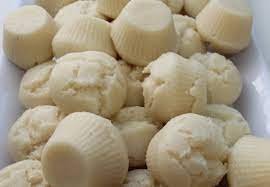
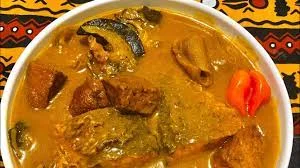
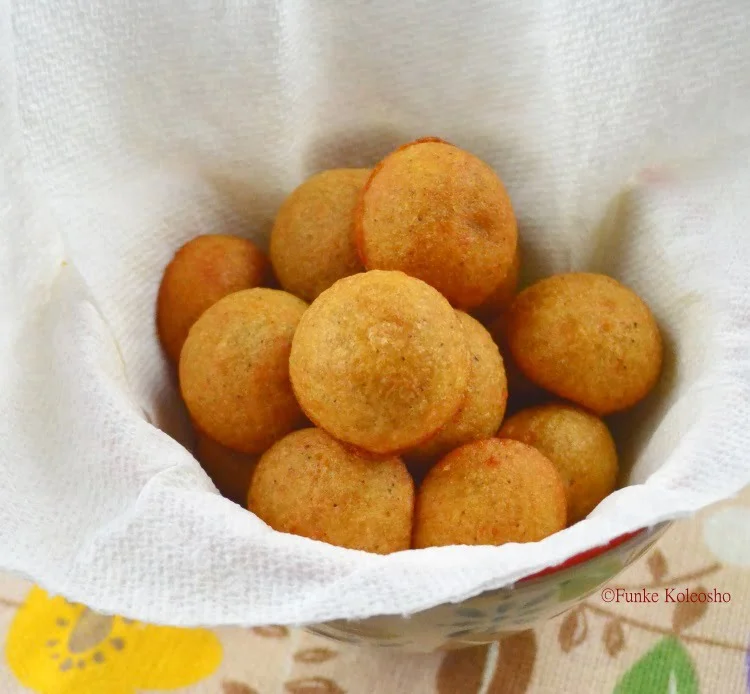
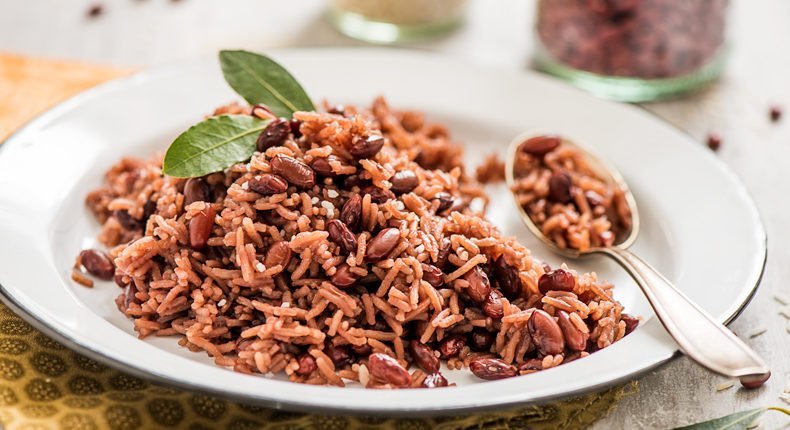
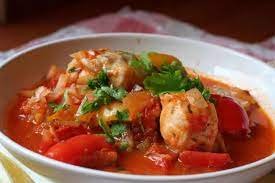
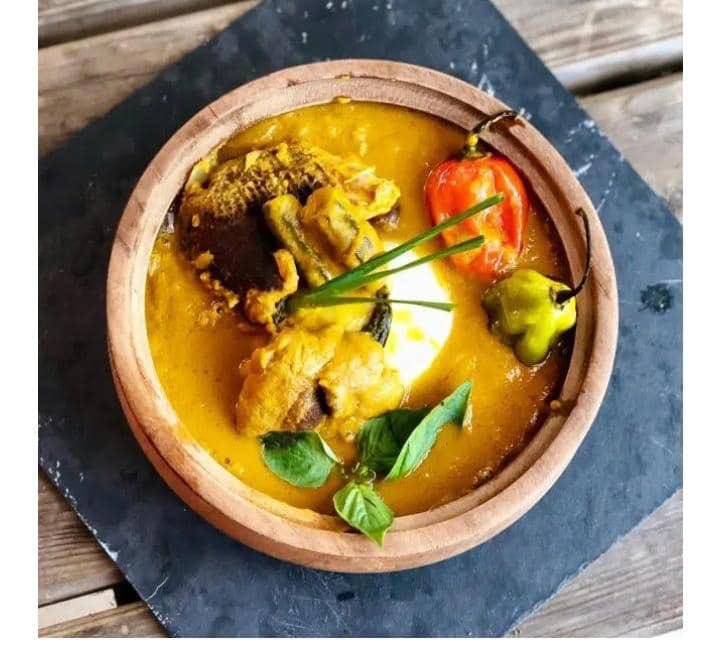

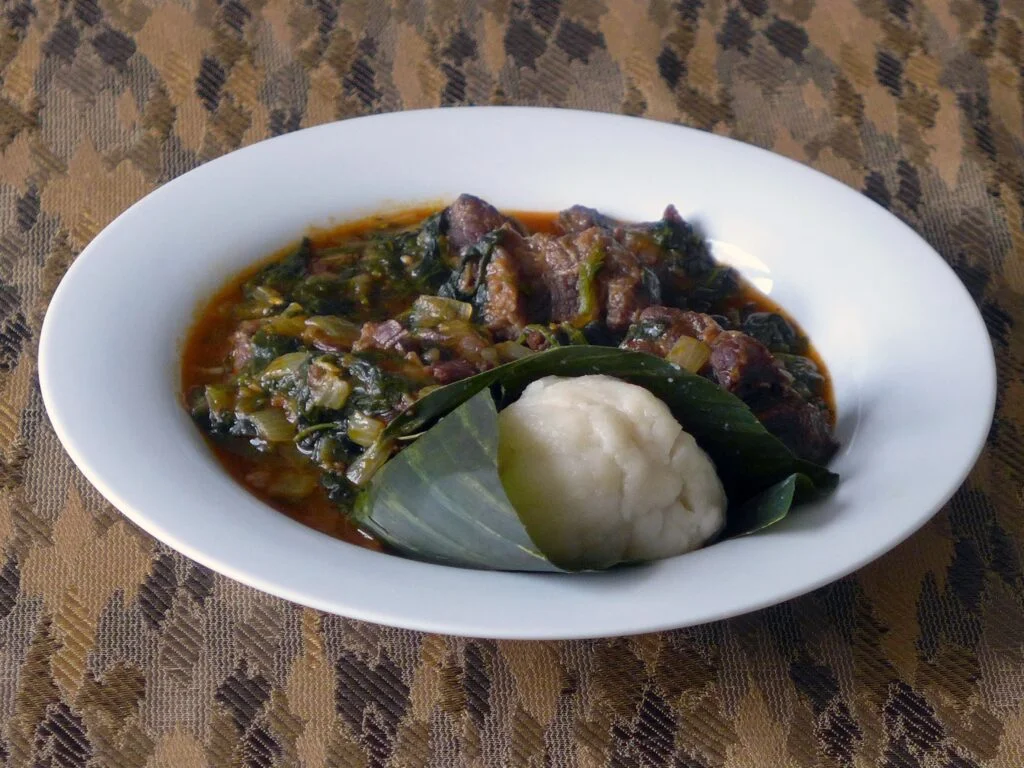
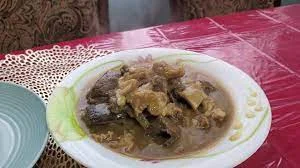
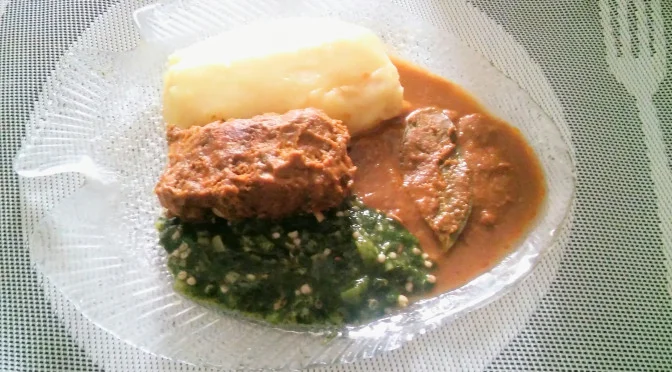
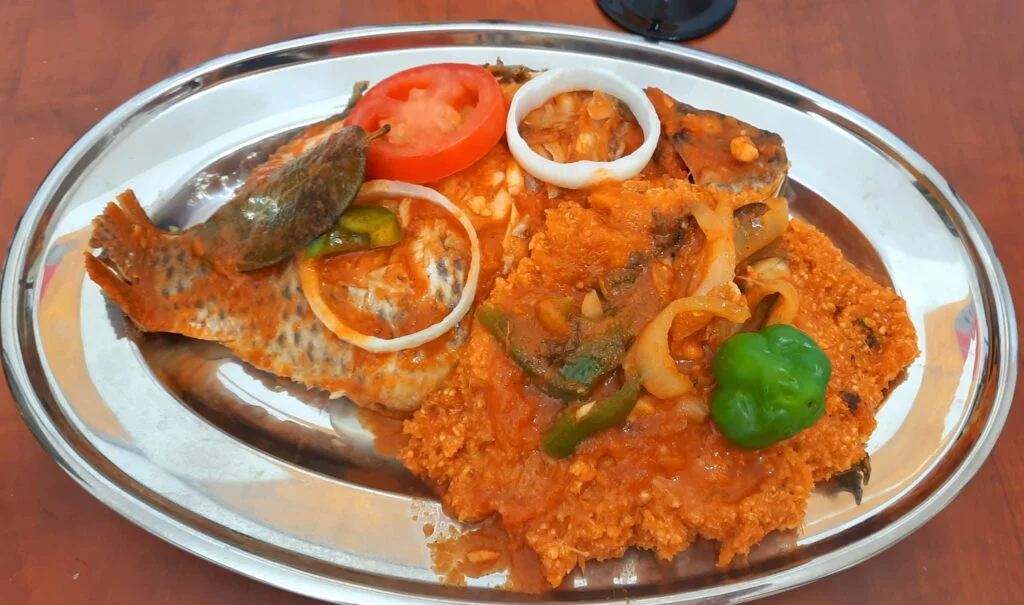
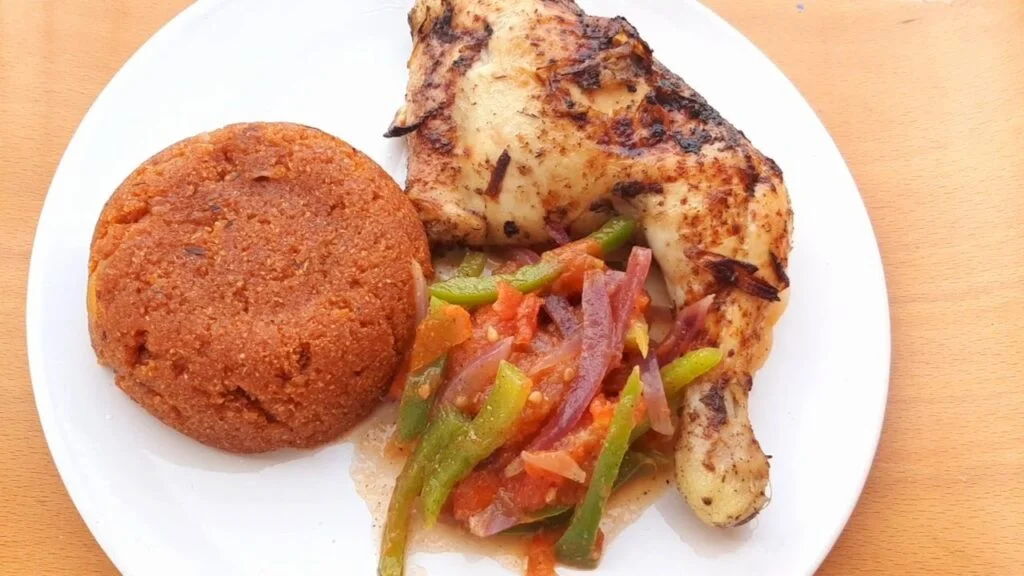
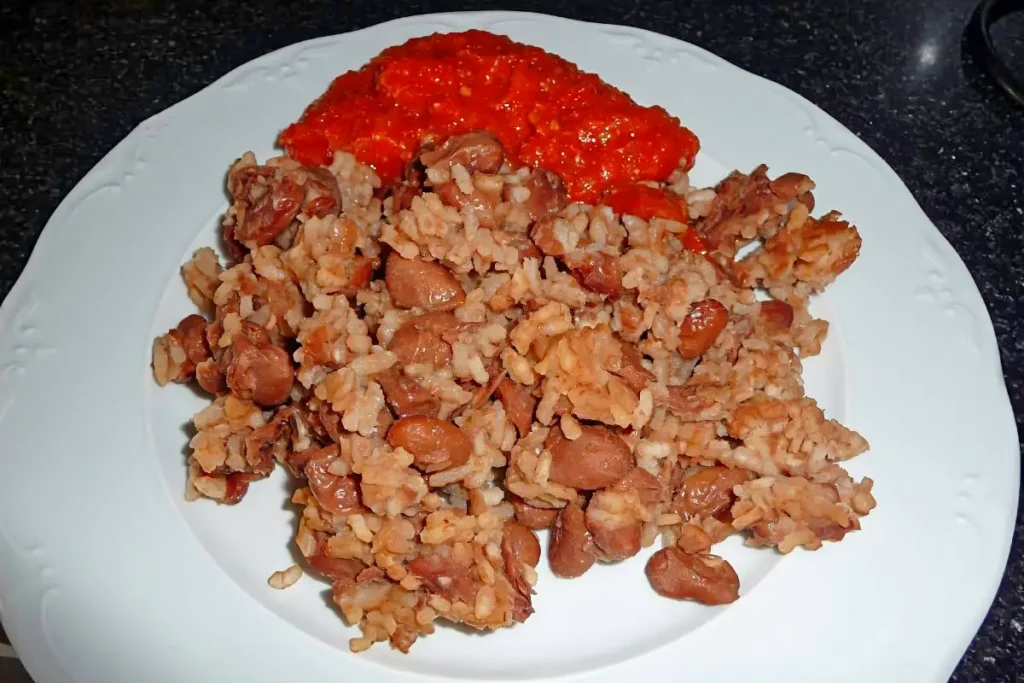

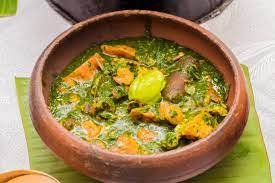



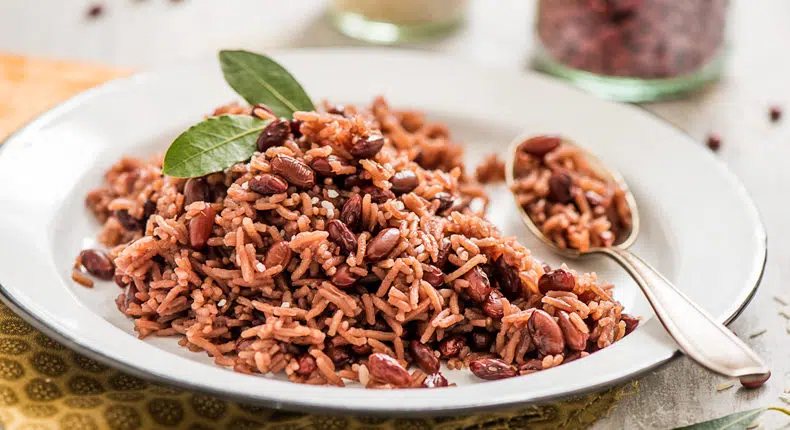


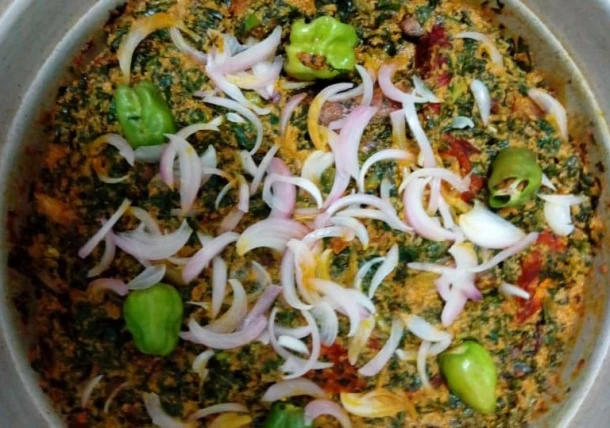

10 Fascinating Facts about Benin

Benin, nestled in West Africa, is a land of vibrant culture, rich history, and intriguing customs. As we delve deeper into this captivating country, let’s uncover 10 fascinating facts and quirky laws that shed light on the uniqueness of Benin.
Voodoo Capital of the World:
Benin holds the title of being the birthplace and epicenter of Voodoo (or Vodun) practices. Voodoo is an integral part of Beninese culture, with ceremonies, rituals, and festivals dedicated to honoring spirits and ancestors.
Zangbeto: The Spirit Guardians
In Benin, mysterious masked figures known as Zangbeto roam the streets at night, serving as protectors of the community. These enigmatic guardians are believed to possess supernatural powers and play a crucial role in maintaining order and harmony.
Fon, Not French

Despite being a former French colony, the official language of Benin is not French but Fon. Fon is one of the many indigenous languages spoken in Benin and holds significant cultural importance.
The Kingdom of Dahomey
Benin was once home to the powerful Kingdom of Dahomey, renowned for its fierce female warriors known as the Dahomey Amazons. These formidable fighters were feared throughout the region for their unmatched combat prowess.
The Birthplace of African Art

Benin boasts a rich artistic heritage, with a long history of producing exquisite bronze sculptures, intricate textiles, and vibrant traditional masks. These artistic traditions continue to thrive, attracting admirers from around the world.
Motorcycles: A Primary Mode of Transportation

In Benin, motorcycles, locally known as “zemidjans,” are ubiquitous and serve as a primary mode of transportation. These nimble vehicles navigate the bustling streets with ease, offering a convenient means of getting around.
The Forbidden Twin Town of Igbo-Ora
Located in southwestern Benin, Igbo-Ora is known as the “Twin Capital of the World” due to its unusually high rate of twin births. Despite its fascinating reputation, the town is considered taboo for twins, who are believed to possess supernatural powers.
Sacred Forests

Benin is home to numerous sacred forests, revered as spiritual sanctuaries and biodiversity hotspots. These forests serve as vital ecosystems and are protected by local communities as sacred sites of cultural and environmental significance.
Lake Nokoué: Home to the Floating Villages
Lake Nokoué, situated near the coastal city of Cotonou, is dotted with unique floating villages where residents live in stilt houses above the water. These picturesque communities thrive on fishing and trade, offering a glimpse into a way of life shaped by the lake’s waters.
The Mysterious Door of No Return

Along the coast of Benin lies the haunting reminder of the transatlantic slave trade—the Door of No Return. This solemn monument symbolizes the departure point for countless enslaved Africans forcibly taken from their homeland, leaving a profound legacy of resilience and remembrance.
From its vibrant cultural traditions to its awe-inspiring natural wonders, Benin captivates the imagination and leaves a lasting impression on all who venture into its embrace. As we bid farewell to this fascinating country, may we carry with us the spirit of curiosity and appreciation for the diverse tapestry of humanity that defines Benin.
Beninese History and the Effect on Beninese Food
Benin’s rich history isn’t just found in museums and ancient ruins – it’s simmering in every pot and sizzling on every grill! Let’s embark on a delicious adventure through time, exploring how different eras have shaped the unique cuisine of Benin.
Kingdoms, Trade, and a World of Flavors (13th-19th Century)
Imagine a time of thriving kingdoms, like the mighty Edo people. Legend tells of a power shift in the 13th century, when Prince Oranmiyan of Ife was invited to rule. This era also saw Benin flourish as a trading hub, connecting with other West African nations and beyond.
This cultural exchange wasn’t just about goods – it was a flavor exchange! New ingredients like cassava, corn, and chilies were introduced, forever altering the culinary landscape of Benin. These “newcomers” became the cornerstones of traditional dishes, adding a vibrant dimension to the national palate.
Fonio: The Ancient Grain with a Modern Twist

Fonio isn’t just any grain – it’s an ancient West African superfood cultivated for over 5,000 years! Packed with protein, fiber, and iron, this gluten-free wonder boasts a nutty flavor that perfectly complements various dishes.
Fonio takes center stage in porridges, couscous, and salads, and features prominently during religious ceremonies and festivals, holding a special place in Benin’s cultural heart.
Pounded Yam and Egusi Soup: A Timeless Combination
This classic duo is a beloved staple across West Africa, and Benin is no exception. Imagine fluffy pounded yam, made by boiling and mashing yams until smooth, served alongside a rich and flavorful egusi soup.
Egusi soup is a symphony of ground melon seeds, vegetables, and aromatic spices, creating a taste explosion in every bite. This hearty combination is not just delicious – it’s a cultural touchstone, often enjoyed using your hands, connecting you to generations past.
Kuli-Kuli: The King of Snacks
Craving a crunchy, satisfying bite? Look no further than kuli-kuli, Benin’s favorite snack! Made from a delightful blend of ground peanuts, spices, and flour, these bite-sized treats are a delight on their own.
But kuli-kuli’s versatility doesn’t stop there. They are a common sight in markets and from street vendors, enjoyed as a snack or adding a delightful textural contrast to soups and stews.
Akassa: The Fermented Delight
Akassa is more than just a breakfast staple in Benin – it’s a testament to the country’s rich culinary heritage, enjoyed for centuries. This unique dish starts with cornmeal, soaked in water until it ferments, resulting in a slightly sour yet satisfying porridge.
Akassa is typically served with a spicy sauce made from tomatoes, onions, and chilies, adding a fiery kick to this traditional breakfast or lunchtime favorite.
Gboman: A Celebration of Diversity in a Bowl
Benin’s cuisine is a vibrant tapestry of flavors, and gboman is a perfect example. This hearty stew features black-eyed peas as the star of the show, simmered with tomatoes, onions, and a medley of colorful vegetables like spinach and eggplant
. Each spoonful bursts with flavor and reflects the beautiful diversity of ingredients and influences that have shaped Benin’s culinary journey.
Benin’s cuisine is a captivating story waiting to be savored. Every dish is a window into the past, a delicious reminder of the historical, cultural, and trade winds that have shaped this fascinating country. So, next time you have a chance, embark on your own culinary adventure and explore the irresistible flavors of Benin!
References
How Benin’s Climate and Geography Influence Beninese Food

The climate and geography of Benin affect the availability and variety of food crops, as well as the cooking methods and preferences of the people.
The dry season, which lasts from November to March, is characterized by hot and dry weather, especially in the north, where the Harmattan wind blows from the Sahara desert. During this season, food crops such as millet, sorghum, and peanuts are grown in the northern regions, where the rainfall is low and the soil is sandy.
These crops are used to make porridge, bread, and sauces, such as kuli-kuli, a peanut paste mixed with spices. The dry season is also a time for preserving food by drying, smoking, or salting, such as fish, meat, and vegetables.
The rainy season, which runs from April to October, is marked by humid and rainy weather, especially in the south, where the coast is exposed to the Gulf of Guinea. During this season, food crops such as corn, yams, cassava, plantains, beans, and rice are grown in the southern and central regions, where the rainfall is higher and the soil is more fertile.
These crops are used to make dishes such as akassa, a fermented corn dough; igname pilée, a mashed yam dish; and aloko, fried plantains. The rainy season is also a time for enjoying fresh fruits, such as mangoes, pineapples, bananas, and oranges.

Benin’s Geography
Benin’s food is also influenced by its diverse geography, which includes mountains, plains, rivers, and lakes. The mountainous regions, such as the Atacora range in the northwest, offer a variety of wild game, such as antelopes, monkeys, and guinea fowls, as well as honey and mushrooms.
The plains and rivers, such as the Oueme and the Niger, provide a source of fish, such as tilapia, catfish, and carp, as well as water plants, such as water spinach and water lily. The lakes and lagoons, such as Lake Nokoue and Lake Aheme, are home to shellfish, such as crabs, shrimps, and oysters, as well as aquatic birds, such as ducks and geese.

Understanding the Essence of Beninese Food Recipes
West Africa is a region brimming with vibrant cultures, and Benin’s cuisine is a shining example. But what exactly makes Beninese food so unique? Ditch the bland and predictable – Benin’s culinary scene is an orchestra of unexpected ingredients, bold flavors, and time-honored traditions, creating a symphony for your taste buds.

A Fusion Through Time
Benin’s history is a tapestry woven with threads of trade and cultural exchange. From the powerful kingdoms of the past to its position as a modern trade hub, influences from across West Africa and beyond have left their mark on the national cuisine.
Think Portuguese chilies adding a fiery kick, or the introduction of cassava and corn becoming staples alongside indigenous ingredients like fonio, the ancient grain with a nutty crunch. This historical fusion is what sets Benin’s food apart, offering a kaleidoscope of flavors unlike any other.
Local Heroes Take Center Stage
While globalization has brought the world closer, Benin stays true to its roots. Local ingredients are the stars of the show, offering a taste of the land itself. Imagine fluffy pounded yam, a comforting staple, or akassa, the fermented cornmeal porridge with a slightly sour tang.
Vegetables like spinach and eggplant add vibrant color and freshness, while black-eyed peas become hearty stews like gboman. Benin’s cuisine celebrates the bounty of its land, ensuring each dish is a celebration of local treasures.
A Celebration of Texture
Beninese food is not just about taste – it’s a full sensory experience. Imagine the smooth, comforting texture of pounded yam alongside the satisfying crunch of kuli-kuli, peanut-based snacks that add a playful textural contrast to stews.
Fonio, the ancient grain, offers a delightful chew in salads, while akassa’s unique fermented texture creates a new dimension in every bite. This focus on texture keeps things interesting, ensuring every mouthful is an adventure.
Spice Up Your Life (Literally)
Beninese cuisine isn’t afraid of a little heat. The arrival of chilies during trade centuries ago has become a defining element of Beninese food. Imagine fiery egusi soup, bursting with the flavor of ground melon seeds, or gboman stew with its perfect balance of vegetables and a touch of chili heat.
While spice levels can vary depending on the region, the subtle or pronounced presence of chilies adds a depth and complexity to Beninese dishes, making them truly unforgettable.
A Culinary Journey for Everyone
Benin’s cuisine caters to a variety of dietary needs. Vegetarian options abound, reflecting the Buddhist influences that have shaped the culture.
Meat lovers can rejoice in stews and grilled meats, while seafood lovers can find fresh catches along the coast. Regardless of your dietary preferences, Benin’s culinary scene offers something delicious for everyone to discover.
Traditional Beninese Food
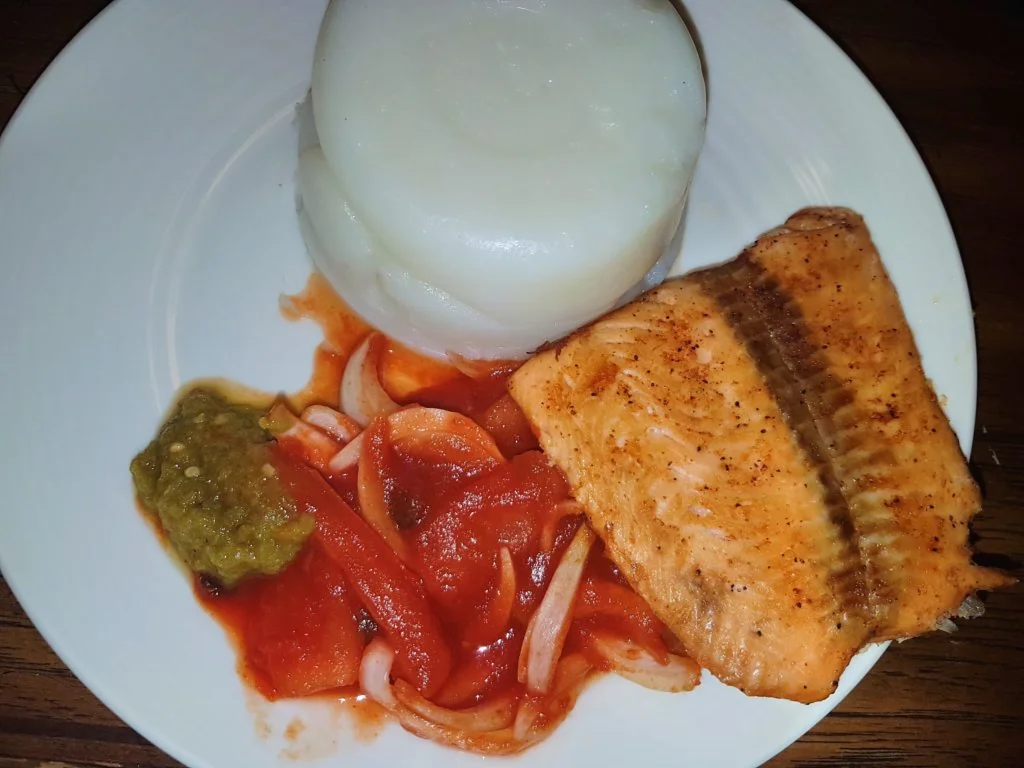
As we journey through the cultural tapestry of Benin, one cannot help but be mesmerized by the rich and diverse flavors that define its culinary landscape. From hearty stews to spicy sauces, Beninese cuisine offers a tantalizing array of dishes that reflect the country’s vibrant culture and heritage.
Let’s embark on a culinary adventure and explore five traditional Beninese dishes that are sure to delight your palate.
Jollof Rice: A West African Staple
Jollof rice is a beloved dish across West Africa, and Benin is no exception. This flavorful one-pot meal features long-grain rice cooked with tomatoes, onions, peppers, and a medley of spices.
Whether served with grilled chicken, fish, or beans, Jollof rice is a comforting and satisfying dish that embodies the essence of Beninese hospitality.
Pâte Rouge: A Fiery Delight
Pâte Rouge, or “red paste,” is a spicy sauce made from ground red peppers, onions, tomatoes, and palm oil. It’s a staple condiment in Beninese cuisine, adding a fiery kick to everything from grilled meats to steamed vegetables.
Be prepared for a flavor explosion with each spoonful of this vibrant and aromatic sauce.
Akassa: Comfort in a Bowl
Akassa is a traditional Beninese dish made from fermented cornmeal, similar to a thick porridge or polenta. It’s often served alongside rich and flavorful soups or stews, such as palm nut soup or okra soup.
Akassa provides a comforting and nourishing meal that warms the soul and satisfies the appetite.
Grilled Fish: Fresh from the Waters of Benin
With its coastline along the Gulf of Guinea, Benin is blessed with an abundance of fresh seafood, and grilled fish is a popular delicacy. Fresh fish, typically tilapia or catfish, is marinated in a blend of spices and grilled to perfection over an open flame.
Served with a side of spicy sauce and boiled plantains or cassava, grilled fish offers a taste of Benin’s coastal flavors.
Gboma Dessi: Sweet Treats from Benin
No meal in Benin is complete without a sweet indulgence, and Gboma Dessi fits the bill perfectly. These fried doughnuts are made from a mixture of flour, sugar, and spices, then deep-fried until golden brown. Light and crispy on the outside, with a soft and fluffy interior, Gboma Dessi is a delightful way to satisfy your sweet tooth.
Embrace the Culinary Heritage of Benin
As you savor these traditional Beninese dishes, you’ll discover a world of flavors, textures, and aromas that reflect the country’s rich cultural heritage. From the vibrant markets of Cotonou to the bustling kitchens of Porto-Novo, Benin’s cuisine is a celebration of tradition, community, and the boundless creativity of its people. So, indulge in the flavors of Benin and let your taste buds take you on a journey through this enchanting West African nation.
What Are the Health Implications of Benin’s Cuisine?

Benin’s cuisine is based on staple foods, such as corn, yams, cassava, plantains, rice, and beans, which provide carbohydrates, fiber, and protein. Benin’s cuisine also includes fish, chicken, meat, and vegetables, which are cooked in palm or peanut oil and seasoned with spices, such as ginger, garlic, nutmeg, and chili peppers.
These foods provide essential fats, vitamins, minerals, and antioxidants.
Benin’s cuisine has some health benefits, such as:
- The use of seeds, nuts, and sauces, which add flavor and texture to the dishes, also provide healthy fats, protein, and micronutrients, such as iron, zinc, magnesium, and calcium.
- The consumption of fresh fruits, such as mangoes, pineapples, bananas, and oranges, especially during the rainy season, provides vitamin C, which boosts the immune system and helps prevent scurvy.
- The fermentation of some foods, such as corn dough (akassa) and cassava (gari), enhances their nutritional value and reduces their antinutritional factors, such as phytates and cyanide.
However, Benin’s cuisine also has some health risks, such as:
- The high intake of salt, especially from processed foods, such as bouillon cubes and canned fish, which are widely used in Beninese dishes, can increase the blood pressure and the risk of cardiovascular diseases.
- The low intake of dairy products, which are not widely available or consumed in Benin, can lead to calcium deficiency and osteoporosis.
- The high consumption of palm oil, which is rich in saturated fat, can raise the cholesterol levels and the risk of obesity and diabetes.
Therefore, Benin’s cuisine can be healthy and balanced if it is consumed in moderation and with some adjustments, such as reducing the salt and palm oil intake, increasing the dairy and vegetable intake, and choosing lean meats and fish over fatty ones.
Benin’s cuisine can also be enriched by incorporating more diverse and nutritious foods, such as millet, sorghum, peanuts, and sesame seeds, which are grown in the northern regions of the country.
Beninese National Dish

At the heart of Benin’s culinary identity lies a unifying dish that transcends regional differences – Kuli Kuli. this dish offers a delightful snacking experience. Share this crunchy treat with friends and family and embrace the joy of Benin’s snacking tradition.
Often prepared during special occasions and gatherings, Jollof Rice is more than a dish; it is a cultural emblem that brings people together.
Exploring Benin’s Food Ingredients: The Flavors of Beninese Food

Benin’s food ingredients are a testament to the nation’s agricultural abundance. From the versatile yams to the exotic flavors of African spices, the ingredients used in Beninese cuisine reflect a harmonious blend of tradition and innovation.
The use of locally sourced produce not only enhances the flavors but also promotes sustainability and a connection to the land.
Beninese Food Recipes – Great Examples to Try at Home
Embark on a culinary adventure with these authentic Beninese recipes that capture the essence of the nation’s food culture.
From the aromatic aroma of Grilled Fish with Piri-Piri Sauce to the comforting embrace of Akassa Soup, these recipes bring the flavors of Benin to your kitchen. Explore the diversity, savor the richness, and experience the joy of cooking Beninese-style.
Benin Food – Ablo (Traditional rice-based cake)

Ablo: A Culinary Journey Through Benin’s Heritage
This is a traditional rice cake, holds a special place in Benin’s culinary heritage. Originating from the vibrant West African region, this dish reflects the rich history and cultural diversity of the people.
Typically enjoyed during festive occasions and family gatherings, Ablo is more than just a food item; it is a symbol of unity and celebration.
Beninese Food – Ablo Ingredients:
- 2 cups of rice
- 1 cup of cornmeal
- 1 cup of all-purpose flour
- 1 tablespoon of sugar
- 1 teaspoon of salt
- 1 teaspoon of active dry yeast
- Warm water (as needed)
Beninese Food Ablo Recipe:
Prepare the Ingredients
- Rinse the rice thoroughly and soak it in water for a few hours or overnight.
- In a separate bowl, dissolve the yeast in warm water and let it sit for about 5 minutes until it becomes frothy.
Grind the Rice
- Drain the soaked rice and grind it into a smooth paste.
- In the same blender, add cornmeal, all-purpose flour, sugar, and salt. Blend until you achieve a homogeneous mixture.
Combine and Ferment
- Mix the rice paste with the yeast mixture.
- Add warm water gradually to form a batter with a consistency similar to pancake batter.
- Cover the batter and let it ferment for at least 2 hours, allowing it to rise.
Cook the Ablo
- Grease a steaming container or banana leaves (traditionally used) with oil.
- Pour the batter into the container, filling it halfway.
- Steam the Ablo for about 30-40 minutes or until a toothpick inserted comes out clean.
Serving and Enjoyment:
- Servings: 4-6 people
- Cooking Time: Approximately 3 hours (including fermentation)
- Calories: The total calorie count for the ingredients is approximately 1200 calories.
Ablo, with its soft texture and subtle sweetness, is a delightful addition to any Beninese celebration. Share this dish with loved ones and savor the flavors that encapsulate the cultural richness of Benin.
Beninese Food – Assrokouin (Wild Apple Almond Sauce)
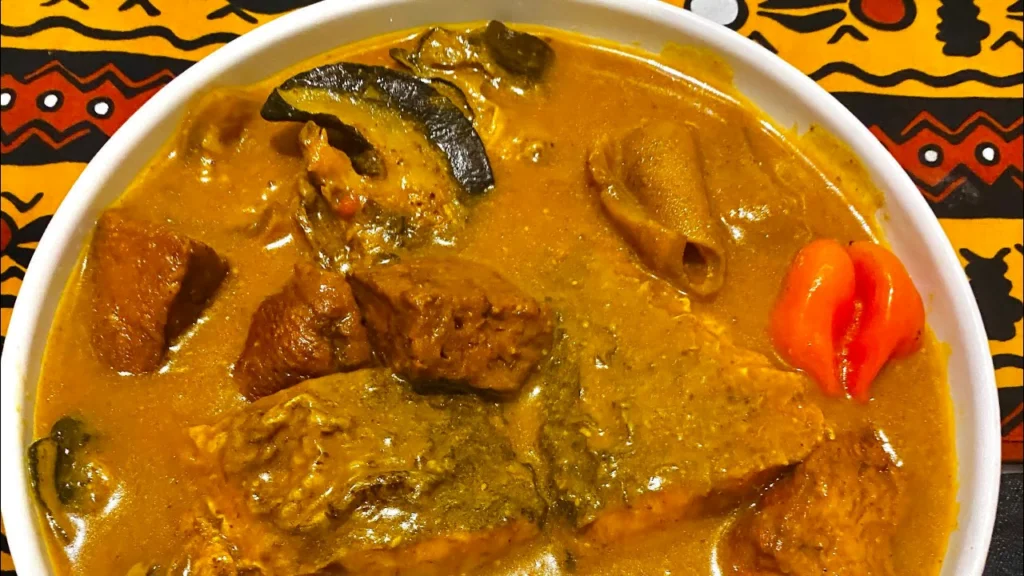
Assrokouin: A Flavorful Legacy from Benin
This is a delectable sauce made with wild apple almonds, is a culinary gem that traces its roots to the culturally diverse region of Benin. This dish embodies the historical tapestry of the country, where unique ingredients are harmoniously blended to create a gastronomic masterpiece.
Typically enjoyed during special occasions, Assrokouin reflects the essence of Benin’s culinary traditions.
Beninese Food Ingredients:
- 1 cup wild apple almonds
- 1 onion, finely chopped
- 2 tomatoes, diced
- 2 tablespoons palm oil
- 2 cloves garlic, minced
- 1 teaspoon ginger, grated
- 2 red chili peppers, chopped
- Salt and pepper to taste
Beninese Food Recipe:
Prepare the Wild Apple Almonds
- Shell the wild apple almonds and soak them in warm water for about 2 hours.
- Peel the almonds, revealing the white flesh inside.
Sauté the Aromatics
- In a pan, heat palm oil over medium heat.
- Add chopped onions, garlic, and ginger. Sauté until the onions are translucent.
Blend the Almonds
- In a blender, combine the soaked and peeled wild apple almonds with diced tomatoes.
- Blend until you achieve a smooth paste.
Cook the Sauce
- Add the almond and tomato paste to the sautéed aromatics.
- Stir in chopped red chili peppers, salt, and pepper.
- Simmer the sauce over low heat for about 15-20 minutes, allowing the flavors to meld.
Serving and Enjoyment:
- Servings: 4-6 people
- Cooking Time: Approximately 1 hour
- Calories: The total calorie count for the ingredients is approximately 800 calories.
Assrokouin, with its nutty richness and spicy undertones, is a testament to Benin’s culinary creativity. Serve it over rice or with traditional staples and relish the unique flavors that make this dish a beloved part of Beninese cuisine.
Beninese Food – Ata (Bean-based cake)

Ata: A Hearty Bean Porridge Rooted in Benin’s Culinary Heritage
This is a flavorful bean porridge, is deeply ingrained in the culinary traditions of Benin. Originating from the vibrant West African region, this dish reflects the rich history and diverse cultural influences of the area.
Known for its robust flavors and nutritional value, Ata is a staple that has stood the test of time, making it a cherished part of Beninese cuisine.
Beninese Food – Ata Ingredients:
- 2 cups black-eyed peas, soaked overnight
- 1 large onion, finely chopped
- 2 red bell peppers, chopped
- 2 tomatoes, diced
- 2 cloves garlic, minced
- 1 teaspoon ginger, grated
- 2 tablespoons vegetable oil
- Salt and pepper to taste
- Optional: chopped vegetables (e.g., spinach, kale) for added nutrition
Beninese Food – Ata Recipe
Prepare the Black-Eyed Peas
- Drain and rinse the soaked black-eyed peas.
- In a blender, grind the black-eyed peas to a coarse texture.
Sauté the Aromatics
- In a large pot, heat vegetable oil over medium heat.
- Add chopped onions, garlic, and ginger. Sauté until the onions are translucent.
Blend the Peas and Vegetables
- In a blender, combine the ground black-eyed peas with chopped red bell peppers and diced tomatoes.
- Blend until you achieve a smooth paste.
Cook the Bean Porridge
- Add the blended paste to the pot with sautéed aromatics.
- Stir well and let it simmer over medium-low heat.
- Add salt and pepper to taste.
- Optionally, add chopped vegetables for added texture and nutrition.
- Continue to simmer until the porridge reaches a thick, hearty consistency.
Serving and Enjoyment:
- Servings: 4-6 people
- Cooking Time: Approximately 1 hour
- Calories: The total calorie count for the ingredients is approximately 900 calories.
This has wholesome ingredients and comforting taste, is a dish that not only satisfies the palate but also provides a nourishing experience. Serve it as a main course, and relish the warmth and cultural richness that Ata brings to the table.
Beninese Food – Atassi (Traditional dish)

Atassi: A Culinary Heritage of Benin’s Coastal Regions
This is a flavorful dish hailing from the coastal regions of Benin, carries the essence of the country’s maritime history and cultural diversity. With influences from local ingredients and international trade, Atassi has become a symbol of Benin’s culinary prowess.
The seafood-infused delight reflects the coastal lifestyle, bringing together fresh catches and indigenous flavors in a harmonious blend.
Beninese Food – Atassi Ingredients:
- 500g fresh fish fillets (snapper or tilapia)
- 2 cups shrimp, peeled and deveined
- 1 onion, finely chopped
- 2 tomatoes, diced
- 2 bell peppers (red and green), chopped
- 2 cloves garlic, minced
- 1 teaspoon ginger, grated
- 2 tablespoons palm oil
- 1 teaspoon ground crayfish
- 2 tablespoons tomato paste
- Salt and pepper to taste
- Fresh cilantro for garnish
Beninese Food – Atassi Recipe
Prepare the Seafood
- Clean and cut the fish fillets into bite-sized pieces.
- Season the shrimp and fish with salt, pepper, and ground crayfish.
Sauté the Aromatics
- In a pot, heat palm oil over medium heat.
- Add chopped onions, garlic, and ginger. Sauté until the onions are translucent.
Add Vegetables and Seafood
- Stir in diced tomatoes and chopped bell peppers.
- Add the seasoned fish and shrimp to the pot.
- Cook until the seafood is partially cooked.
Enhance the Flavors
- Incorporate tomato paste for richness.
- Season with salt and pepper to taste.
- Allow the mixture to simmer until the seafood is fully cooked.
Garnish and Serve
- Garnish with fresh cilantro for a burst of flavor.
- Serve hot over rice or with a side of traditional Beninese staples.
Serving and Enjoyment:
- Servings: 4-6 people
- Cooking Time: Approximately 30 minutes
- Calories: The total calorie count for the ingredients is approximately 1200 calories.
With its seafood bounty and vibrant flavors, it is a testament to the coastal traditions of Benin. Share this dish with family and friends and savor the taste of the ocean in every delightful bite.
Beninese Food – Dahomey Fish Stew (Fish stew from Dahomey region)

Dahomey Fish Stew: A Historical Feast from Benin’s Heartland
This is a culinary masterpiece from the heartland of Benin, is deeply rooted in the historical tapestry of the region. Originating from the ancient Kingdom of Dahomey, this dish represents a rich heritage of West African flavors.
Passed down through generations, Dahomey Fish Stew showcases the cultural significance of fish in Beninese cuisine, capturing the essence of the country’s traditions.
Beninese Food – Dahomey Fish Stew Ingredients:
- 500g fresh fish fillets (tilapia or catfish)
- 2 tomatoes, diced
- 1 large onion, finely chopped
- 2 bell peppers (red and green), chopped
- 2 cloves garlic, minced
- 1 teaspoon ginger, grated
- 2 tablespoons palm oil
- 1 tablespoon tomato paste
- 2 cups fish stock or water
- 2 tablespoons ground crayfish
- Salt and pepper to taste
- Fresh parsley for garnish
Beninese Food – Dahomey Fish Stew Recipe:
Prepare the Fish
- Clean and cut the fish fillets into desired portions.
- Season the fish with salt and pepper.
Sauté the Aromatics
- In a large pot, heat palm oil over medium heat.
- Add chopped onions, garlic, and ginger. Sauté until the onions are golden brown.
Add Vegetables and Fish
- Stir in diced tomatoes and chopped bell peppers.
- Add the seasoned fish to the pot.
Create the Stew Base
- Dissolve tomato paste in fish stock or water.
- Pour the mixture into the pot.
- Add ground crayfish for depth of flavor.
Simmer and Season
- Let the stew simmer over medium-low heat until the fish is fully cooked.
- Season with salt and pepper to taste.
Garnish and Serve
- Garnish with fresh parsley for a burst of freshness.
- Serve hot over rice or with a side of traditional Beninese staples.
Serving and Enjoyment:
- Servings: 4-6 people
- Cooking Time: Approximately 45 minutes
- Calories: The total calorie count for the ingredients is approximately 800 calories.
The stew, with its robust flavors and cultural significance, invites you to savor a taste of Benin’s history. Share this dish with loved ones and experience the culinary journey that transcends time and generations.
Beninese Food – Dekounoun Sounnou (Seed Sauce)

Dekounoun Sounnou: A Culinary Journey through Benin’s Heartlands
This is a traditional Beninese dish, hails from the heartlands of the country, rooted in the rich agricultural history of the region. As an embodiment of Benin’s cultural diversity, this dish reflects the reliance on locally sourced ingredients and the unique culinary techniques that have been passed down through generations.
Dekounoun Sounnou is a celebration of Benin’s connection to the land and the flavors that define its vibrant cuisine.
Beninese Food – Dekounoun Sounnou Ingredients:
- 2 cups melon seeds (egusi)
- 500g spinach, chopped
- 2 tomatoes, diced
- 1 onion, finely chopped
- 2 cloves garlic, minced
- 1 teaspoon ginger, grated
- 2 tablespoons palm oil
- 2 cups vegetable broth or water
- Salt and pepper to taste
- Optional: smoked fish or shrimp for added flavor
- Fresh cilantro for garnish
Beninese Food – Dekounoun Sounnou Recipe:
Roast and Grind Melon Seeds
- Roast melon seeds in a dry pan until fragrant.
- Grind the roasted seeds into a fine powder using a mortar and pestle or a grinder.
Sauté Aromatics
- Heat palm oil in a pot over medium heat.
- Sauté chopped onions, garlic, and grated ginger until onions are translucent.
Incorporate Melon Seeds and Tomatoes
- Add the ground melon seeds to the pot, stirring continuously.
- Introduce diced tomatoes to the mixture and cook until the tomatoes soften.
Add Spinach and Broth
- Blend in chopped spinach and pour in vegetable broth or water.
- Include optional smoked fish or shrimp for enhanced flavor.
Simmer and Season
- Allow the mixture to simmer over medium-low heat until the spinach is tender.
- Season the dish with salt and pepper to taste.
Garnish and Serve
- Garnish with fresh cilantro for a burst of flavor.
- Serve Dekounoun Sounnou hot over rice or with traditional Beninese staples.
Serving and Enjoyment:
- Servings: 4-6 people
- Cooking Time: Approximately 45 minutes
- Calories: The total calorie count for the ingredients is approximately 800 calories.
This dish invites you to savor the agricultural abundance of Benin. Share this dish with loved ones and experience the essence of Beninese culinary traditions grounded in local flavors.
Benin Food – Djewo (Salted paste)
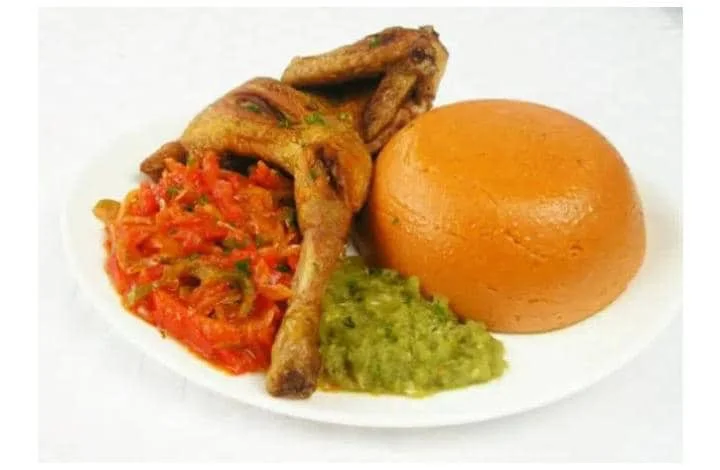
Djewo: A Culinary Treasure from the Heart of Benin
This is a cherished dish from Benin, is a culinary treasure that originates from the heart of West Africa. Rooted in the country’s rich cultural tapestry, Djewo has been a traditional delight passed down through generations.
Celebrated for its simplicity and versatility, Djewo reflects the warm communal spirit of Beninese dining, making it a staple in homes and gatherings across the region.
Benin Food – Djewo Ingredients:
- 2 cups cornmeal
- 1 cup water
- Salt to taste
- Banana leaves or parchment paper for wrapping
Benin Food – Djewo Recipe:
Prepare the Cornmeal Dough
- In a mixing bowl, combine cornmeal and water to form a thick, smooth dough.
- Add salt to taste, ensuring the dough is well-seasoned.
Shape and Wrap the Djewo
- Take a portion of the cornmeal dough and shape it into a compact ball.
- Flatten the ball and place it on a piece of banana leaf or parchment paper.
- Fold the leaf or paper over the dough, creating a secure parcel. Repeat for the desired number of servings.
Steam the Djewo
- Set up a steamer and bring water to a boil.
- Place the wrapped Djewo parcels in the steamer and steam for approximately 30-40 minutes or until the dough is thoroughly cooked.
Serve and Enjoy
- Unwrap the Djewo parcels and serve them hot.
- Djewo is traditionally paired with savory sauces, stews, or grilled meats.
Serving and Enjoyment:
- Servings: 4-6 people
- Cooking Time: Approximately 40 minutes
- Calories: The total calorie count for the ingredients is approximately 600 calories.
With its humble yet inviting preparation, this dish beckons you to experience the heart and soul of Benin’s culinary heritage. Share this dish with loved ones, embracing the communal spirit that Djewo brings to the table.
Benin Food – Eba (Piron – Cassava dough-food)

Nourishing Cassava Dough Delight from Benin
It is known locally as Piron, is a staple in Benin’s culinary landscape, offering a taste of the country’s reliance on cassava, a significant agricultural product. Originating from the West African region, Eba is a versatile and filling dish that reflects the resourcefulness of Benin’s people.
Its history is intertwined with the cultural practices and traditions of the region, making it an essential part of Beninese meals.
Benin Food – Eba Ingredients:
- 2 cups cassava flour
- Water for kneading
- Salt to taste
Benin Food – Eba Recipe:
Prepare the Cassava Dough
- Place cassava flour in a large bowl.
- Gradually add water while kneading to form a smooth, elastic dough.
- Add salt to taste and continue kneading until well incorporated.
Shape the Eba
- Divide the dough into manageable portions.
- Shape each portion into a round, flat disk, ensuring a smooth surface.
Cook the Eba
- Bring a pot of water to a boil.
- Gently immerse each shaped dough disk into the boiling water.
- Cook for 5-7 minutes or until the dough is firm and fully cooked.
Serve and Enjoy
- Remove the cooked Eba from the water and let it cool for a moment.
- Serve the Eba alongside traditional Beninese stews, sauces, or grilled meats.
Serving and Enjoyment:
- Servings: 4-6 people
- Cooking Time: Approximately 20 minutes
- Calories: The total calorie count for the ingredients is approximately 600 calories.
The dish stands as a testament to the reliance on cassava in Benin’s cuisine. Share this hearty dish with friends and family, embracing the simplicity and sustenance that Eba brings to Beninese dining tables.
Benin Food – Gboman (Dish with large nightshade vegetables)

Gboman: A Nutrient-Rich Leafy Dish from Benin’s Heartlands
This is a nutritious and flavorful dish, originates from the heartlands of Benin. This traditional Beninese meal reflects the country’s deep connection to its agricultural roots and the rich diversity of ingredients available.
It stands as a testament to the resourcefulness of Beninese cuisine, offering a wholesome blend of leafy greens and vibrant spices.
Benin Food – Gboman Ingredients:
- 500g Gboman (Large Nightshade) leaves, finely chopped
- 2 tomatoes, diced
- 1 onion, finely chopped
- 2 cloves garlic, minced
- 2 tablespoons palm oil
- 2 cups vegetable broth or water
- 1 teaspoon ground crayfish
- 2 red or green bell peppers, chopped
- Salt and pepper to taste
- Optional: smoked fish or shrimp for added flavor
Benin Food – Gboman Recipe
Sauté the Aromatics
- In a pot, heat palm oil over medium heat.
- Add chopped onions and minced garlic. Sauté until the onions are translucent.
Add Tomatoes and Bell Peppers
- Stir in diced tomatoes and chopped bell peppers.
- Cook until the tomatoes are softened, creating a flavorful base.
Introduce Gboman and Broth
- Add finely chopped Gboman leaves to the pot.
- Pour in vegetable broth or water, creating a stew-like consistency.
Enhance the Flavors
- Incorporate ground crayfish for a depth of flavor.
- Optionally, include smoked fish or shrimp for added richness.
Simmer and Season
- Let the mixture simmer over medium heat until the Gboman leaves are tender.
- Season with salt and pepper to taste.
Serve and Enjoy
- Gboman is traditionally served hot over rice or with a side of traditional Beninese staples.
Serving and Enjoyment:
- Servings: 4-6 people
- Cooking Time: Approximately 30 minutes
- Calories: The total calorie count for the ingredients is approximately 600 calories.
With its leafy goodness and aromatic spices this dish invites you to savor the nutritional wealth of Benin. Share this dish with friends and family and relish the wholesome flavors that Gboman brings to Beninese tables.
Beninese Food – Gbo Kpete (Mutton Sauce)
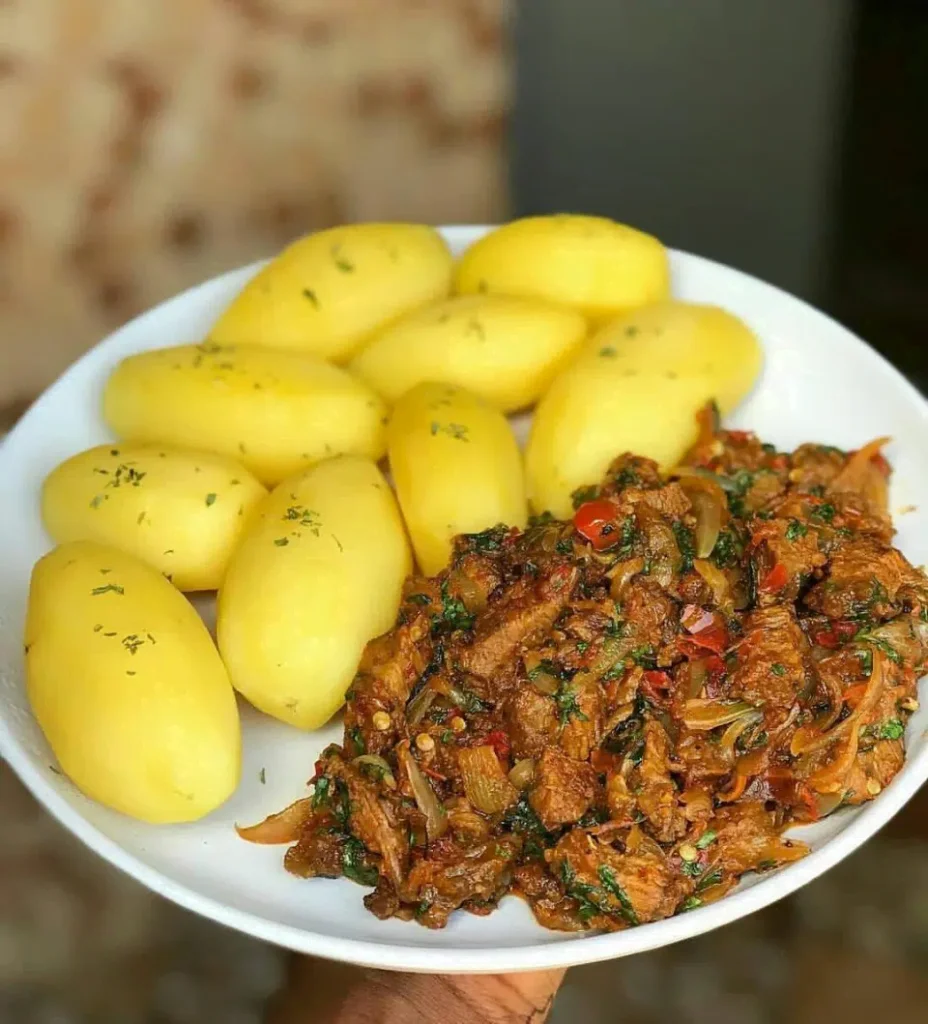
Gbo Kpete (Mutton Sauce): A Hearty Delicacy from Benin’s Culinary Heritage
This is a delectable mutton sauce, is deeply rooted in Benin’s culinary heritage. Originating from the West African region, this hearty dish reflects the pastoral traditions of Benin, where mutton holds cultural significance.
It stands out for its rich flavors, showcasing the country’s love for slow-cooked meats and aromatic spices.
Beninese Food – Gbo Kpete Ingredients:
- 500g mutton, cubed
- 2 tomatoes, diced
- 1 onion, finely chopped
- 2 cloves garlic, minced
- 1 teaspoon ginger, grated
- 2 tablespoons palm oil
- 2 cups vegetable broth or water
- 2 red or green bell peppers, chopped
- 2 tablespoons tomato paste
- 1 teaspoon ground crayfish
- Salt and pepper to taste
- Fresh parsley for garnish
Beninese Food – Gbo Kpete Recipe:
Sauté the Aromatics
- In a pot, heat palm oil over medium heat.
- Add chopped onions, minced garlic, and grated ginger. Sauté until the onions are translucent.
Brown the Mutton
- Add cubed mutton to the pot and brown on all sides.
- Ensure the mutton is well-seared for enhanced flavor.
Create the Base
- Stir in diced tomatoes and chopped bell peppers.
- Add tomato paste for richness and depth of color.
Introduce Broth and Season
- Pour in vegetable broth or water to create a stew-like consistency.
- Season the mixture with ground crayfish, salt, and pepper to taste.
Simmer to Perfection
- Let the sauce simmer over low heat, allowing the mutton to tenderize.
- Simmer until the flavors meld and the mutton reaches the desired tenderness.
Garnish and Serve
- Garnish with fresh parsley for a burst of freshness.
- Gbo Kpete is traditionally served hot over rice, yams, or with traditional Beninese staples.
Serving and Enjoyment:
- Servings: 4-6 people
- Cooking Time: Approximately 2 hours (including mutton tenderization)
- Calories: The total calorie count for the ingredients is approximately 800 calories.
The dish invites you to savor the robust flavors of slow-cooked mutton, celebrating the culinary traditions of Benin. Share this dish with friends and family and relish the heartiness that Gbo Kpete brings to Beninese tables.
Benin Food – Kuli-Kuli (National Food of Benin)

Kuli-Kuli: A Crunchy Delight from Benin’s Snacking Tradition
This is the national food and a popular snack from Benin. It has deep roots in the country’s snacking culture. Originating from the West African region, Kuli-Kuli showcases the ingenious use of groundnuts (peanuts) in creating a crunchy, flavorful treat.
As a versatile snack enjoyed by people of all ages, Kuli-Kuli has become a symbol of Benin’s resourcefulness and the joy found in simple, yet delightful, culinary creations.
Benin Food – Kuli-Kuli Ingredients:
- 2 cups roasted groundnuts (peanuts)
- 1 teaspoon powdered ginger
- 1 teaspoon cayenne pepper
- Salt to taste
- 2 tablespoons water (for binding)
- Vegetable oil for deep frying
Benin Food – Kuli-Kuli Recipe:
Prepare the Groundnuts
- Roast the groundnuts until they are golden brown.
- Allow the roasted groundnuts to cool, then remove the skins.
Grind the Groundnuts
- Grind the roasted groundnuts into a coarse powder using a food processor or mortar and pestle.
Season the Mixture
- In a bowl, combine the groundnut powder, powdered ginger, cayenne pepper, and salt.
- Gradually add water to the mixture, creating a thick, pliable dough.
Shape the Kuli-Kuli
- Take small portions of the dough and shape them into balls or cylindrical forms.
- Ensure the shapes are compact and well-formed.
Deep Fry
- Heat vegetable oil in a deep fryer or a deep pan.
- Gently immerse the shaped Kuli-Kuli into the hot oil and fry until golden brown.
Drain and Cool
- Remove the fried Kuli-Kuli from the oil and place them on paper towels to drain excess oil.
- Allow the Kuli-Kuli to cool completely before serving.
Serving and Enjoyment:
- Servings: 6-8 people
- Cooking Time: Approximately 30 minutes
- Calories: The total calorie count for the ingredients is approximately 800 calories.
With its satisfying crunch and bold flavors this dish offers a delightful snacking experience. Share this crunchy treat with friends and family and embrace the joy of Benin’s snacking tradition.
Benin Food – Le Agoun (Traditional dish)

A Traditional Beninese Delight from the Coastal Region
This is a cherished dish, originates from the coastal region of Benin. As a testament to the country’s vibrant culinary tapestry, this traditional delight is deeply rooted in the coastal communities’ reliance on seafood.
The dish captures the essence of Benin’s coastal flavors, bringing together fresh fish, aromatic spices, and the cultural heritage of the region.
Benin Food – Le Agoun Ingredients:
- 500g fresh fish fillets (mullet or similar white fish)
- 2 tomatoes, diced
- 1 onion, finely chopped
- 2 cloves garlic, minced
- 2 tablespoons palm oil
- 2 cups vegetable broth or water
- 2 red or green bell peppers, chopped
- 2 tablespoons tomato paste
- 1 teaspoon ground crayfish
- Salt and pepper to taste
- Fresh parsley for garnish
Benin Food – Le Agoun Recipe:
Prepare the Fresh Fish
- Clean and fillet the fresh fish, removing any scales or bones.
- Cut the fish into bite-sized pieces.
Sauté the Aromatics
- In a pot, heat palm oil over medium heat.
- Add chopped onions and minced garlic. Sauté until the onions are translucent.
Add Tomatoes and Bell Peppers
- Stir in diced tomatoes and chopped bell peppers.
- Cook until the tomatoes are softened, creating a flavorful base.
Introduce Fish and Broth
- Add the fresh fish pieces to the pot.
- Pour in vegetable broth or water to create a seafood-infused stew.
Enhance the Flavors
- Add tomato paste and ground crayfish for richness and depth of flavor.
- Season the mixture with salt and pepper to taste.
Simmer and Garnish
- Let the stew simmer over medium heat until the fish is cooked through.
- Garnish with fresh parsley for a burst of freshness.
Serve and Enjoy
- The dish is traditionally served hot over rice or with traditional Beninese staples.
Serving and Enjoyment:
- Servings: 4-6 people
- Cooking Time: Approximately 40 minutes
- Calories: The total calorie count for the ingredients is approximately 700 calories.
It invites you to experience the coastal flavors of Benin. Share this seafood delight with friends and family and savor the cultural richness that Le Agoun brings to the dining table.
Benin Food – Le Dakouin (Traditional dish)

A Flavorful Journey from Benin’s Heartlands
This is a culinary gem, hails from the heartlands of Benin, showcasing the country’s rich agricultural traditions and love for bold flavors. As a dish deeply connected to Benin’s cultural heritage, Le Dakouin captures the essence of communal dining and the joy found in sharing hearty meals.
Rooted in tradition, this flavorful dish has become a staple, reflecting the agricultural bounty of the region.
Ingredients:
- 500g chicken, cut into pieces
- 2 tomatoes, diced
- 1 onion, finely chopped
- 2 cloves garlic, minced
- 2 tablespoons palm oil
- 2 cups vegetable broth or water
- 2 red or green bell peppers, chopped
- 2 tablespoons tomato paste
- 1 teaspoon ground crayfish
- 1 teaspoon thyme
- Salt and pepper to taste
- Fresh parsley for garnish
Benin Food – Le Dakouin Recipe:
Prepare the Chicken
- Clean and cut the chicken into manageable pieces.
- Season the chicken with thyme, salt, and pepper.
Sauté the Aromatics
- In a pot, heat palm oil over medium heat.
- Add chopped onions and minced garlic. Sauté until the onions are translucent.
Add Tomatoes and Bell Peppers
- Stir in diced tomatoes and chopped bell peppers.
- Cook until the tomatoes are softened, creating a flavorful base.
Introduce Chicken and Broth
- Add the seasoned chicken pieces to the pot.
- Pour in vegetable broth or water to create a rich, chicken-infused stew.
Enhance the Flavors
- Add tomato paste, ground crayfish, and additional thyme for depth of flavor.
- Adjust seasoning with salt and pepper to taste.
Simmer to Perfection
- Let the stew simmer over medium heat until the chicken is cooked through.
- Ensure the flavors meld and the stew reaches the desired thickness.
Garnish and Serve
- Garnish with fresh parsley for a burst of color and freshness.
- Le Dakouin is traditionally served hot over rice or with traditional Beninese staples.
Serving and Enjoyment:
- Servings: 4-6 people
- Cooking Time: Approximately 45 minutes
- Calories: The total calorie count for the ingredients is approximately 800 calories.
It invites you to savor the robust flavors of Benin’s heartlands. Share this delightful dish with friends and family, celebrating the cultural richness that Le Dakouin brings to Beninese dining tables.
Benin Food – Le Mantindjan (Traditional dish)

Le Mantindjan: A Cultural Tapestry from Benin’s Coastal Heritage
This is a culinary masterpiece, finds its roots in the coastal heritage of Benin. Originating from the coastal regions, this dish reflects the influence of the Atlantic Ocean on Beninese cuisine.
As a manifestation of the country’s rich history, Le Mantindjan showcases the blend of flavors and ingredients that define the coastal culinary traditions of Benin.
Benin Food – Le Mantindjan Ingredients:
- 500g fish fillets (mullet or similar white fish)
- 2 tomatoes, diced
- 1 onion, finely chopped
- 2 cloves garlic, minced
- 2 tablespoons palm oil
- 2 cups coconut milk
- 2 red or green bell peppers, chopped
- 2 tablespoons tomato paste
- 1 teaspoon ground crayfish
- 1 teaspoon thyme
- Salt and pepper to taste
- Fresh parsley for garnish
- 2 cups cooked rice (for serving)
Benin Food – Le Mantindjan Recipe:
Prepare the Fish
- Clean and cut the fish fillets into bite-sized pieces.
- Season the fish with thyme, salt, and pepper.
Sauté the Aromatics
- In a pot, heat palm oil over medium heat.
- Add chopped onions and minced garlic. Sauté until the onions are translucent.
Add Tomatoes and Bell Peppers
- Stir in diced tomatoes and chopped bell peppers.
- Cook until the tomatoes are softened, creating a flavorful base.
Introduce Fish and Coconut Milk
- Add the seasoned fish pieces to the pot.
- Pour in coconut milk to create a luscious, coastal-inspired broth.
Enhance the Flavors
- Add tomato paste, ground crayfish, and additional thyme for depth of flavor.
- Adjust seasoning with salt and pepper to taste.
Simmer to Perfection
- Let the stew simmer over medium heat until the fish is cooked through.
- Ensure the flavors meld, and the broth reaches a rich consistency.
Garnish and Serve
- Garnish with fresh parsley for a burst of color and freshness.
- Le Mantindjan is traditionally served hot over cooked rice.
Serving and Enjoyment:
- Servings: 4-6 people
- Cooking Time: Approximately 40 minutes
- Calories: The total calorie count for the ingredients is approximately 900 calories.
It invites you to experience the coastal flavors of Benin. Share this delectable dish with friends and family and celebrate the cultural richness that Le Mantindjan brings to Beninese dining tables.
Benin Food – Le Piron (Traditional dish)

Culinary Legacy from Benin’s Inland Traditions
It is a culinary legacy, traces its origins to the inland regions of Benin, offering a glimpse into the country’s diverse gastronomic tapestry. Rooted in tradition, this hearty dish reflects the agricultural richness of Benin’s heartlands and the resourcefulness of its people.
The dish, with its unique combination of ingredients, stands as a testament to the country’s culinary heritage.
Ingredients:
- 500g beef, cut into bite-sized pieces
- 2 tomatoes, diced
- 1 onion, finely chopped
- 2 cloves garlic, minced
- 2 tablespoons palm oil
- 2 cups vegetable broth or water
- 2 red or green bell peppers, chopped
- 2 tablespoons tomato paste
- 1 teaspoon ground crayfish
- 1 teaspoon thyme
- Salt and pepper to taste
- Fresh parsley for garnish
- 2 cups cooked rice (for serving)
Benin Food – Le Piron Recipe:
Prepare the Beef
- Cut the beef into bite-sized pieces, ensuring it is well-trimmed.
- Season the beef with thyme, salt, and pepper.
Sauté the Aromatics
- In a pot, heat palm oil over medium heat.
- Add chopped onions and minced garlic. Sauté until the onions are translucent.
Add Tomatoes and Bell Peppers
- Stir in diced tomatoes and chopped bell peppers.
- Cook until the tomatoes are softened, creating a flavorful base.
Introduce Beef and Broth
- Add the seasoned beef pieces to the pot.
- Pour in vegetable broth or water to create a rich, beef-infused stew.
Enhance the Flavors
- Add tomato paste, ground crayfish, and additional thyme for depth of flavor.
- Adjust seasoning with salt and pepper to taste.
Simmer to Perfection
- Let the stew simmer over medium heat until the beef is tender.
- Ensure the flavors meld, and the stew reaches a hearty consistency.
Garnish and Serve
- Garnish with fresh parsley for a burst of color and freshness.
- Le Piron is traditionally served hot over cooked rice.
Serving and Enjoyment:
- Servings: 4-6 people
- Cooking Time: Approximately 1 hour
- Calories: The total calorie count for the ingredients is approximately 900 calories.
The dish beckons you to savor the flavors of Benin’s heartlands. Share this wholesome dish with friends and family and celebrate the cultural richness that Le Piron brings to Beninese dining tables.
Benin Food – Le Tchatchaounga (Traditional dish)

A Culinary Heritage from Benin’s Northern Regions
This culinary masterpiece, originates from the northern regions of Benin, offering a taste of the country’s diverse gastronomic traditions. Rooted in the cultural heritage of the northern communities, this dish showcases the resourcefulness of Benin’s people in creating flavorful and satisfying meals.
The dish embodies the rich tapestry of ingredients and techniques unique to Benin’s northern culinary landscape.
Benin Food – Le Tchatchaounga Ingredients:
- 500g lamb, cut into bite-sized pieces
- 2 tomatoes, diced
- 1 onion, finely chopped
- 2 cloves garlic, minced
- 2 tablespoons vegetable oil
- 2 cups vegetable broth or water
- 2 red or green bell peppers, chopped
- 2 tablespoons tomato paste
- 1 teaspoon ground cumin
- 1 teaspoon ground coriander
- Salt and pepper to taste
- Fresh cilantro for garnish
- 2 cups couscous (for serving)
Benin Food – Le Tchatchaounga Recipe:
Prepare the Lamb
- Cut the lamb into bite-sized pieces, ensuring it is well-trimmed.
- Season the lamb with ground cumin, ground coriander, salt, and pepper.
Sauté the Aromatics
- In a pot, heat vegetable oil over medium heat.
- Add chopped onions and minced garlic. Sauté until the onions are translucent.
Add Tomatoes and Bell Peppers
- Stir in diced tomatoes and chopped bell peppers.
- Cook until the tomatoes are softened, creating a flavorful base.
Introduce Lamb and Broth
- Add the seasoned lamb pieces to the pot.
- Pour in vegetable broth or water to create a savory lamb-infused stew.
Enhance the Flavors
- Add tomato paste, ground cumin, and ground coriander for a robust flavor profile.
- Adjust seasoning with salt and pepper to taste.
Simmer to Perfection
- Let the stew simmer over medium heat until the lamb is tender.
- Ensure the flavors meld, and the stew reaches a hearty consistency.
Garnish and Serve
- Garnish with fresh cilantro for a burst of color and freshness.
- The dish is traditionally served hot over fluffy couscous.
Serving and Enjoyment:
- Servings: 4-6 people
- Cooking Time: Approximately 1 hour
- Calories: The total calorie count for the ingredients is approximately 900 calories.
This dish invites you to experience the flavors of Benin’s northern regions. Share this delightful dish with friends and family and embrace the cultural richness that Le Tchatchaounga brings to Beninese dining tables.
Benin Food – Monyo (Traditional dish)

A Traditional Delicacy from Benin’s Culinary Legacy
This is a beloved dish with deep roots in Benin’s culinary legacy, offers a nostalgic taste of tradition. Originating from various regions across Benin, this dish is a testament to the diverse cultural influences that shape the country’s gastronomy.
It brings together simple yet flavorful ingredients, creating a dish that resonates with the rich history and culinary creativity of the Beninese people.
Benin Food – Monyo Ingredients:
- 500g smoked fish (catfish or similar)
- 2 tomatoes, diced
- 1 onion, finely chopped
- 2 cloves garlic, minced
- 2 tablespoons palm oil
- 2 cups vegetable broth or water
- 2 red or green bell peppers, chopped
- 2 tablespoons tomato paste
- 1 teaspoon ground crayfish
- 1 teaspoon thyme
- Salt and pepper to taste
- Fresh parsley for garnish
- 2 cups cooked rice (for serving)
Benin Food – Monyo Recipe:
Prepare the Smoked Fish
- Clean the smoked fish, removing any bones or scales.
- Break the fish into smaller, manageable pieces.
Sauté the Aromatics
- In a pot, heat palm oil over medium heat.
- Add chopped onions and minced garlic. Sauté until the onions are translucent.
Add Tomatoes and Bell Peppers
- Stir in diced tomatoes and chopped bell peppers.
- Cook until the tomatoes are softened, creating a flavorful base.
Introduce Smoked Fish and Broth
- Add the prepared smoked fish to the pot.
- Pour in vegetable broth or water to create a rich, smoky-infused stew.
Enhance the Flavors
- Add tomato paste, ground crayfish, and thyme for additional depth of flavor.
- Adjust seasoning with salt and pepper to taste.
Simmer to Perfection
- Let the stew simmer over medium heat until the smoked fish is fully incorporated.
- Ensure the flavors meld, and the stew reaches a rich consistency.
Garnish and Serve
- Garnish with fresh parsley for a burst of color and freshness.
- Monyo is traditionally served hot over cooked rice.
Serving and Enjoyment:
- Servings: 4-6 people
- Cooking Time: Approximately 45 minutes
- Calories: The total calorie count for the ingredients is approximately 800 calories.
The dish invites you to savor the flavors of Benin’s culinary heritage. Share this traditional dish with friends and family and celebrate the cultural richness that Monyo brings to Beninese dining tables.
Benin Food – Ninnouwi (Crincrin Sauce)
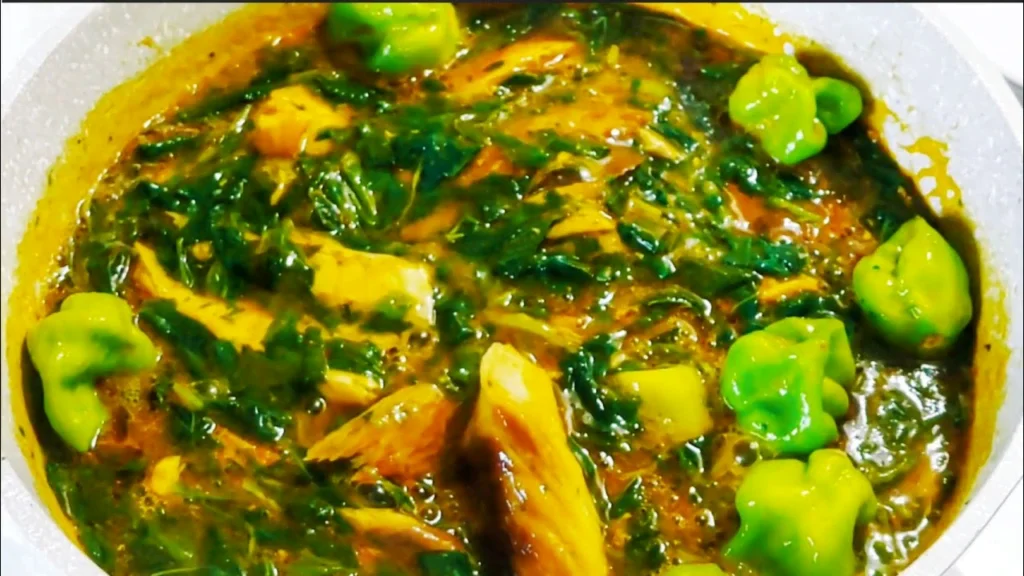
A Culinary Heritage from Benin’s Southern Tradition
This is a cherished dish, is deeply embedded in Benin’s southern culinary tradition. Originating from the vibrant southern regions of the country, this dish reflects the agricultural bounty and cultural diversity of the area.
It brings together local ingredients and traditional cooking methods, creating a flavorful experience that pays homage to Benin’s rich history and the southern communities that have shaped its culinary landscape.
Benin Food – Ninnouwi Ingredients:
- 500g crabs, cleaned and prepared
- 2 tomatoes, diced
- 1 onion, finely chopped
- 2 cloves garlic, minced
- 2 tablespoons palm oil
- 2 cups vegetable broth or water
- 2 red or green bell peppers, chopped
- 2 tablespoons tomato paste
- 1 teaspoon ground crayfish
- 1 teaspoon thyme
- Salt and pepper to taste
- Fresh parsley for garnish
- 2 cups cooked rice (for serving)
Benin Food – Ninnouwi Recipe:
Prepare the Crabs
- Clean and prepare the crabs, removing the outer shell and any undesirable parts.
- Break the crabs into smaller, manageable pieces.
Sauté the Aromatics
- In a pot, heat palm oil over medium heat.
- Add chopped onions and minced garlic. Sauté until the onions are translucent.
Add Tomatoes and Bell Peppers
- Stir in diced tomatoes and chopped bell peppers.
- Cook until the tomatoes are softened, creating a flavorful base.
Introduce Crabs and Broth
- Add the prepared crab pieces to the pot.
- Pour in vegetable broth or water to create a rich, crab-infused stew.
Enhance the Flavors
- Add tomato paste, ground crayfish, and thyme for additional depth of flavor.
- Adjust seasoning with salt and pepper to taste.
Simmer to Perfection
- Let the stew simmer over medium heat until the crabs are fully cooked.
- Ensure the flavors meld, and the stew reaches a rich consistency.
Garnish and Serve
- Garnish with fresh parsley for a burst of color and freshness.
- Ninnouwi is traditionally served hot over cooked rice.
Serving and Enjoyment:
- Servings: 4-6 people
- Cooking Time: Approximately 45 minutes
- Calories: The total calorie count for the ingredients is approximately 800 calories.
The dish invites you to experience the flavors of Benin’s southern traditions. Share this delightful dish with friends and family and celebrate the cultural richness that Ninnouwi brings to Beninese dining tables.
Benin Food – Telibo (Black Paste)

A Cultural Feast from Benin’s Western Heritage
This culinary gem, has its roots in Benin’s western regions, offering a savory journey through the country’s diverse culinary heritage. Originating from the vibrant western communities, this dish embodies the cultural richness and flavors that define Benin’s gastronomic landscape.
It showcases the ingenious use of local ingredients and traditional cooking methods, creating a dish that holds a special place in the hearts of those who savor its delicious taste.
Benin Food – Telibo Ingredients:
- 500g beef, cut into bite-sized pieces
- 2 tomatoes, diced
- 1 onion, finely chopped
- 2 cloves garlic, minced
- 2 tablespoons vegetable oil
- 2 cups vegetable broth or water
- 2 red or green bell peppers, chopped
- 2 tablespoons tomato paste
- 1 teaspoon ground ginger
- 1 teaspoon ground cloves
- Salt and pepper to taste
- Fresh coriander for garnish
- 2 cups cooked rice (for serving)
Benin Food – Telibo Recipe:
Prepare the Beef
- Cut the beef into bite-sized pieces, ensuring it is well-trimmed.
- Season the beef with ground ginger, ground cloves, salt, and pepper.
Sauté the Aromatics
- In a pot, heat vegetable oil over medium heat.
- Add chopped onions and minced garlic. Sauté until the onions are translucent.
Add Tomatoes and Bell Peppers
- Stir in diced tomatoes and chopped bell peppers.
- Cook until the tomatoes are softened, creating a flavorful base.
Introduce Beef and Broth
- Add the seasoned beef pieces to the pot.
- Pour in vegetable broth or water to create a rich, beef-infused stew.
Enhance the Flavors
- Add tomato paste, ground ginger, and ground cloves for a robust flavor profile.
- Adjust seasoning with salt and pepper to taste.
Simmer to Perfection
- Let the stew simmer over medium heat until the beef is tender.
- Ensure the flavors meld, and the stew reaches a hearty consistency.
Garnish and Serve
- Garnish with fresh coriander for a burst of color and freshness.
- Telibo is traditionally served hot over cooked rice.
Serving and Enjoyment:
- Servings: 4-6 people
- Cooking Time: Approximately 1 hour
- Calories: The total calorie count for the ingredients is approximately 900 calories.
The dish invites you to relish the flavors of Benin’s western traditions. Share this delightful dish with friends and family and celebrate the cultural richness that Telibo brings to Beninese dining tables.
Beninese Food – Tchokourou (Pounded Yam)

A Staple from Benin’s Heartland
This is a culinary staple, originates from the heartland of Benin, reflecting the essence of the country’s traditional cuisine. Rooted in the cultural heritage of Benin’s central regions, this dish symbolizes the resilience of the Beninese people and their ability to create wholesome, satisfying meals from locally available ingredients.
It’s history is intertwined with the daily lives of the people, making it a cherished part of Benin’s gastronomic identity.
Beninese Food – Tchokourou Ingredients:
- 500g yams, peeled and cut into chunks
- 2 tomatoes, diced
- 1 onion, finely chopped
- 2 cloves garlic, minced
- 2 tablespoons palm oil
- 2 cups vegetable broth or water
- 2 red or green bell peppers, chopped
- 2 tablespoons tomato paste
- 1 teaspoon ground pepper
- Salt to taste
- Fresh parsley for garnish
- 2 cups cooked rice (for serving)
Beninese Food – Tchokourou Recipe:
Prepare the Yams
- Peel and cut the yams into bite-sized chunks, ensuring uniform pieces.
- Rinse the yams under cold water to remove excess starch.
Sauté the Aromatics
- In a pot, heat palm oil over medium heat.
- Add chopped onions and minced garlic. Sauté until the onions are translucent.
Add Tomatoes and Bell Peppers
- Stir in diced tomatoes and chopped bell peppers.
- Cook until the tomatoes are softened, creating a flavorful base.
Introduce Yams and Broth
- Add the prepared yam chunks to the pot.
- Pour in vegetable broth or water to create a rich, yam-infused stew.
Enhance the Flavors
- Add tomato paste and ground pepper for a robust flavor profile.
- Adjust seasoning with salt to taste.
Simmer to Perfection
- Let the stew simmer over medium heat until the yams are tender.
- Ensure the flavors meld, and the stew reaches a hearty consistency.
Garnish and Serve
- Garnish with fresh parsley for a burst of color and freshness.
- Tchokourou is traditionally served hot over cooked rice.
Serving and Enjoyment:
- Servings: 4-6 people
- Cooking Time: Approximately 45 minutes
- Calories: The total calorie count for the ingredients is approximately 700 calories.
It invites you to experience the comfort of Benin’s heartland. Share this wholesome dish with friends and family and relish the cultural richness that Tchokourou brings to Beninese dining tables.
Beninese Food – Toubani (Traditional dish)

Sweet Comfort from Benin’s Southern Orchards
This porridge dish is a delightful creation that finds its roots in the southern orchards of Benin, where the abundance of tropical fruits inspires a unique culinary experience.
Originating from the coastal regions, Toubani represents the marriage of Benin’s fertile lands and the creativity of its people. This sweet comfort dish captures the essence of Benin’s southern charm and offers a warm, flavorful journey into the heart of the country’s gastronomic traditions.
Beninese Food – Toubani Ingredients:
- 6 ripe bananas, peeled and sliced
- 1 cup coconut milk
- 1 cup water
- 1 cup sugar
- 2 tablespoons unsalted butter
- 1 teaspoon vanilla extract
- 1/2 teaspoon ground cinnamon
- A pinch of salt
- 1 cup couscous (optional, for serving)
Beninese Food – Toubani Recipe:
Prepare the Bananas
- Peel and slice the ripe bananas into bite-sized pieces.
Caramelize the Bananas
- In a pot, melt unsalted butter over medium heat.
- Add sliced bananas and cook until they caramelize and turn golden brown.
Add Coconut Milk and Water
- Pour in coconut milk and water to the caramelized bananas.
- Stir gently to combine, allowing the mixture to simmer.
Sweeten the Porridge
- Add sugar, vanilla extract, ground cinnamon, and a pinch of salt.
- Adjust sweetness to taste and stir until well-incorporated.
Simmer to Perfection
- Let the porridge simmer over low heat until it reaches a creamy consistency.
- Stir occasionally to prevent sticking and ensure even cooking.
Serve Warm
- Toubani can be served warm on its own or over cooked couscous for added texture.
Serving and Enjoyment:
- Servings: 4-6 people
- Cooking Time: Approximately 30 minutes
- Calories: The total calorie count for the ingredients is approximately 1200 calories.
The porridge dish invites you to indulge in the sweetness of Benin’s southern orchards. Share this comforting dish with loved ones and savor the unique blend of flavors that Toubani brings to Beninese tables.
Beninese Food – Wagassi (Traditional dish)

A Culinary Heritage from Benin’s Northern Plains
This is a culinary masterpiece, emerges from the northern plains of Benin, reflecting the resilience and resourcefulness of the people in this region. Originating from the heart of the country,
Wagassi pays homage to Benin’s agricultural bounty and the traditional practices that shape its unique gastronomy. This dish stands as a testament to the enduring connection between the people and the land, showcasing the simplicity and richness of Benin’s culinary heritage.
Beninese Food – Wagassi Ingredients:
- 500g millet flour
- 2 cups water
- 1 teaspoon salt
- Banana leaves (for wrapping)
- Wooden sticks or twine (for securing the wraps)
Beninese Food – Wagassi Recipe:
Prepare the Millet Dough
- In a bowl, combine millet flour and salt.
- Gradually add water, stirring continuously to form a smooth, elastic dough.
Shape the Wagassi
- Take a portion of the millet dough and shape it into a compact ball.
- Flatten the ball to form a circular disc, creating the Wagassi base.
Wrap in Banana Leaves
- Place the circular dough disc on a banana leaf.
- Fold the banana leaf over the dough, creating a neat wrap.
Secure with Twine
- Use wooden sticks or twine to secure the banana leaf wrap.
- Ensure the Wagassi is tightly sealed for cooking.
Steam to Perfection
- Arrange the wrapped Wagassi in a steamer.
- Steam for approximately 30-40 minutes until the millet dough is cooked.
Unwrap and Serve
- Carefully remove the Wagassi from the banana leaves.
- Serve the steamed Wagassi warm, either on its own or with a side of choice.
Serving and Enjoyment:
- Servings: 4-6 people
- Cooking Time: Approximately 40 minutes
- Calories: The total calorie count for the ingredients is approximately 800 calories.
Wagassi invites you to experience the simplicity and authenticity of Benin’s northern plains. Share this staple dish with friends and family and embrace the cultural richness that Wagassi brings to Beninese dining tables.
Beninese Food – Watché (Traditional dish)

A Nutritious Heritage from Benin’s Coastal Regions
This is a nutritional delight, finds its origins in the coastal regions of Benin, where the bountiful seafood and fertile lands influence the local cuisine. Emerging from the heart of the country,
It reflects the coastal communities’ reliance on diverse, locally available ingredients. This one-pot dish symbolizes the interconnectedness of Benin’s people with the land and sea, creating a flavorful and nourishing experience.
Beninese Food – Watché Ingredients:
- 2 cups rice
- 1 cup black-eyed peas, soaked overnight
- 500g smoked fish or dried shrimp
- 2 tomatoes, diced
- 1 onion, finely chopped
- 2 tablespoons palm oil
- 2 red or green bell peppers, chopped
- 2 cloves garlic, minced
- 1 teaspoon ground ginger
- 1 teaspoon ground pepper
- Salt to taste
- Fresh parsley for garnish
Beninese Food – Watché Recipe:
Prepare the Ingredients
- Rinse the rice and black-eyed peas under cold water.
- Soak the black-eyed peas overnight for optimal tenderness.
Sauté the Aromatics
- In a large pot, heat palm oil over medium heat.
- Add chopped onions and minced garlic. Sauté until the onions are translucent.
Add Tomatoes and Bell Peppers
- Stir in diced tomatoes and chopped bell peppers.
- Cook until the tomatoes are softened, creating a flavorful base.
Introduce Rice, Peas, and Fish
- Add soaked black-eyed peas and rinsed rice to the pot.
- Incorporate smoked fish or dried shrimp for a seafood twist.
Season the Watché
- Sprinkle ground ginger, ground pepper, and salt to taste.
- Stir to ensure even distribution of seasonings.
Simmer to Perfection
- Pour enough water into the pot to cover the ingredients.
- Allow the Watché to simmer over low heat until the rice and peas are cooked.
Garnish and Serve
- Garnish with fresh parsley for a burst of color and freshness.
- Serve Watché hot as a wholesome one-pot meal.
Serving and Enjoyment:
- Servings: 6-8 people
- Cooking Time: Approximately 45 minutes
- Calories: The total calorie count for the ingredients is approximately 1200 calories.
It invites you to savor the taste of Benin’s coastal richness. Share this nutritious dish with friends and family, celebrating the cultural diversity that Watché brings to Beninese dining tables.
Benin Food – Yovo D oko (Traditional dish)

A Sweet Tradition from Benin’s Coastal Markets
This is a sweet and crispy delight, hails from the vibrant coastal markets of Benin, where the fusion of cultures and flavors creates unique culinary treasures. Originating from the southern regions, Yovo Doko represents the sweet tooth of Benin’s coastal communities.
This delectable treat offers a taste of the bustling markets and the coastal breeze, making it a cherished part of Benin’s culinary heritage.
Benin Food – Yovo D oko Ingredients:
- 2 cups all-purpose flour
- 1 cup sugar
- 1 teaspoon baking powder
- Pinch of salt
- 1 cup water
- Vegetable oil (for frying)
Benin Food – Yovo D oko Recipe:
Prepare the Batter
- In a mixing bowl, combine all-purpose flour, sugar, baking powder, and a pinch of salt.
- Gradually add water, stirring continuously, until a smooth batter is formed.
Heat the Oil
- In a deep frying pan, heat vegetable oil over medium heat.
- Ensure the oil reaches a suitable frying temperature.
Fry the Yovo Doko
- Dip a spoon into the batter and carefully drop portions into the hot oil.
- Fry until the Yovo Doko turns golden brown and crispy.
Drain and Sweeten
- Remove the fried Yovo Doko from the oil and place them on a paper towel to drain excess oil.
- Sprinkle additional sugar over the Yovo Doko while they are still warm.
Serve and Enjoy
- Yovo Doko is best enjoyed warm as a delightful snack or dessert.
- Share this crispy treat with friends and family to experience the coastal sweetness of Benin.
Serving and Enjoyment:
- Servings: 4-6 people
- Cooking Time: Approximately 30 minutes
- Calories: The total calorie count for the ingredients is approximately 800 calories.
Yovo Doko invites you to indulge in the sweet traditions of Benin’s coastal markets. Share this crispy delight with loved ones, savoring the cultural richness that Yovo Doko brings to Beninese tables.
Conclusion
the culinary landscape of Benin offers a tantalizing journey through flavors, traditions, and stories deeply rooted in the country’s rich cultural heritage. From the savory delights of grilled fish and spicy stews to the comforting warmth of akassa, Beninese cuisine captivates the senses and invites travelers to embark on a gastronomic adventure like no other.
Through our exploration of Beninese food, we’ve discovered not just dishes but a tapestry of tastes that reflect the country’s diverse influences, from indigenous ingredients to colonial legacies. Each bite tells a story—a story of resilience, resourcefulness, and a deep connection to the land and its people.
As we savor the flavors of Benin, let us not only indulge in the culinary delights but also appreciate the profound significance of food as a vessel for culture, community, and shared experiences. Whether enjoyed in a bustling market, a family home, or a vibrant street corner, Beninese food serves as a bridge that brings people together, fostering bonds of kinship and celebration.
Frequently Asked Questions
What are the key ingredients in Beninese cuisine?
In Beninese cuisine, staple ingredients include yams, cassava, rice, millet, and a variety of locally sourced vegetables. Proteins often come from fish, poultry, and meats, creating a diverse and flavorful palette.
How has Benin’s history influenced its food?
Benin’s history has shaped its cuisine through cultural exchanges and trade. The fusion of local ingredients with influences from Portuguese, French, and African traditions contributes to the unique flavors found in Beninese dishes.
What role does geography play in Beninese food?
Geography significantly influences Beninese food. Coastal regions showcase a reliance on seafood, while inland areas highlight the cultivation of crops like corn and yams. This diversity reflects the country’s rich agricultural landscape.
Can you share a popular traditional Beninese recipe?
Certainly! One beloved dish is Watché, a one-pot meal featuring rice, black-eyed peas, smoked fish, and a medley of flavorful spices. It’s a delicious representation of Benin’s culinary heritage.
Are there health implications associated with Benin’s cuisine?
Beninese cuisine, rich in local, fresh ingredients, generally promotes good health. However, some traditional dishes may be high in carbohydrates and oils. Moderation is key for a balanced and healthy diet.
What is the significance of Benin’s national dish?
Benin’s national dish, Kuli-Kuli, holds cultural importance. Made from ground peanuts, it symbolizes unity and is often shared during communal gatherings, celebrations, and special occasions.
How can one explore Benin’s food culture at home?
To experience Benin’s food culture at home, try preparing dishes like Toubani or Watché. Explore local markets for authentic ingredients and embrace the country’s diverse culinary traditions in your own kitchen.
What makes Beninese food a unique culinary experience?
Beninese food stands out for its diverse flavors, combining local produce, traditional cooking techniques, and cultural influences. The result is a unique culinary experience that reflects the rich heritage and vibrant traditions of Benin.

